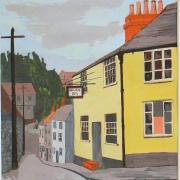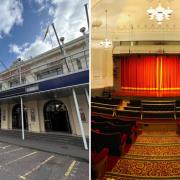Before the founding of the British welfare state, families that fell on hard times often ended up in the local workhouse. Thanks to meticulous record keeping the fate of your pauper ancestors in Dorset can easily be traced

Prior to 1834, most towns and villages had erected a poorhouse, or ‘house of work’, which was intended to provide relief for the most destitute and needy inhabitants of the parish. Until this time relief had been administered on a largely ad-hoc and parochial scale, and was met out by elected officials known as Overseers of the Poor. As the population started to swell as a result of the Industrial Revolution, and economic hardships began to bite in the wake of the Napoleonic Wars, the Old Poor Law, which had been in place since the Elizabethan era, finally began to collapse under the strain.
Corruption and abuses of the Old Poor Law at this time were widespread and it was widely believed to act as a disincentive to paupers by allowing them to become too reliant on ‘hand-outs’ from the parish. New measures were taken to instigate reform on a nationwide basis, and in 1834 the Poor Law Amendment Act was finally passed to stop the problem in its tracks.
Under the terms of this new Act, parishes were to be organised into Poor Law Unions, each served by its own union workhouse, where paupers would be compelled to reside as a condition of receiving relief from the parish. Each union was governed by its own Board of Guardians, made up of elected representatives from each of the parishes concerned. They were responsible for the daily management of the workhouse, employment of the staff, conduct of the inmates, and the administration of poor relief.
Here in Dorset some 282 parishes, containing upwards of 150,000 inhabitants, were initially grouped into 14 unions - this was reduced to 12 in 1836 due to the amalgamations of Cranborne with Wimborne, and Purbeck with Wareham. The largest of the unions was Dorchester, which consisted of 39 parishes under a board of 43 guardians; the smallest was Poole, with only eight parishes and 11 guardians.

In Dorset the majority of the unions managed to establish a workhouse within a few years of the Act being passed. Whilst some attempted to reduce the costs by adapting existing buildings, such as at Blandford and Wimborne, most constructed new workhouses based on the designs laid down by the Poor Law Commissioners. The most popular design was the cruciform, or square, plan, which was adopted at Bridport, Cerne, Dorchester, Poole, Shaftesbury, Sherborne, Wareham, and Weymouth, whilst the Beaminster and Sturminster unions were built to the hexagonal, or “Y”, design. Both plans, however, essentially consisted of a central block with wings radiating out from the centre; these buildings were then surrounded by a series of exercise yards, with a high wall running around the perimeter to enclose the entire site. Besides being efficient in terms of space, the designs also helped to enforce one of the main clauses of the New Poor Law: the segregation of men from women, children from adults, and the aged and infirm from everyone else.
Whilst this was particularly harsh on young families, it was merely part of a wider system to break the spirit and ensure that life inside the workhouse was less desirable than the worst possible conditions on the outside. Inmates could expect to receive daily menial tasks, a meagre diet and harsh punishment as part of the regime.
The Pauper Offence book for the Beaminster Union Workhouse, which is now held at the Dorset History Centre, provides a chilling insight into the stringent measures taken by the Board of Guardians to tackle even minor misdemeanours. In January 1842, for example, one John Aplin found himself “locked up” for 24 hours on a bread and water diet for being “disorderly at prayer time”, whilst in January 1856 John Staple was committed to prison for 28 days for refusing to work. Damage to property was taken particularly seriously, as in April 1844 a pauper by the name of Isaac Hallett was whipped for simply breaking a window.
Living conditions were particularly dire in the early days of the workhouse; overcrowding, squalor and disease were rife. Extreme cases, such as the Wimborne Union Workhouse scandal of 1839, quickly attracted public outrage when the true extent of the inmates’ suffering was reported in the pages of the local and national newspapers. Instances such as these eventually caused the reform of workhouse conditions in the latter half of the nineteenth century; although the institution still remains a symbol of extreme want and oppression to this day. Local newspapers often contained reports of errant paupers who had made off with workhouse property, such as clothing and blankets; sadly, for most the only form of escape was in a wooden box, destined for a pauper’s grave in the local parish churchyard.
Given that so many people passed through the doors of the workhouse system, it is not unusual to find a pauper inmate whilst researching your family tree. The rigorous administration of the Poor Law created a wealth of documentation which can be particularly useful for finding out more about ancestors who fell on hard times. Here in Dorset the original records can be found at the Dorset History Centre, on Bridport Road in Dorchester. Surviving records include minute books, lists of those receiving relief, baptism registers for those born in the workhouse, inmates’ property registers, pauper offence books, and more. It is worth contacting the Dorset History Centre before your visit to check that they hold the records you require call 01305 250550, or you can consult their online catalogue at archives.dorsetforyou.com/adlibwebapp/default.aspx.
Luke Mouland is a professional geneaologist and historian. He runs the website Kith and Kin from his home near Sherborne. Find out more at kithandkinresearch.co.uk.
The Wimborne Workhouse Scandal
In 1839 it was revealed that the inmates of Wimborne Union Workhouse were forced to live in overcrowded and unsanitary conditions, with 13 paupers sharing five beds. Smallpox had broken out in December 1838 and in such dreadful conditions the disease quickly spread and several inmates perished. Local surgeon, George Augustus Place, directed the public attention to the Wimborne workhouse by writing to The Times. This sparked public outrage, eventually forcing the Poor Law Commissioners in London to launch an inquiry into the matter.
***
READ ON
• Where to start when tracing relatives and the meaning behind some Dorset surnames - It’s fascinating tracing relatives but where do you start? In a new series genealogist Luke Mouland provides useful tips and turns up some interesting Dorset names
• How photographs in uniform can provide clues about the role ancestors had during the Great War - Many husbands, fathers, fiances and sons going to war had their photograph taken in uniform. These poignant mementoes can provide vital clues about the role your ancestor had during the Great War
• How Christmas was celebrated at Dorset’s grand country houses - Shooting parties, balls and dinners were all part of the festive celebrations at Dorset’s grand country houses. It was also when a maid could be waited on by her master or a butler dance with his mistress



























